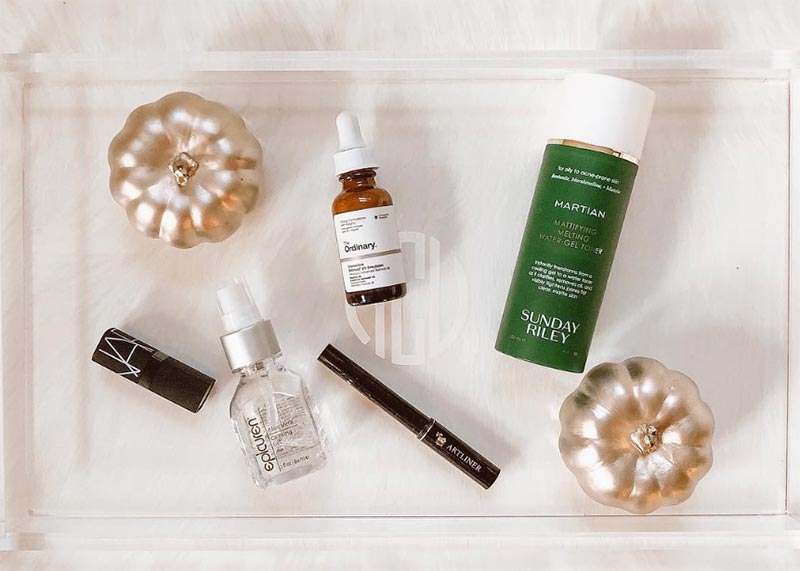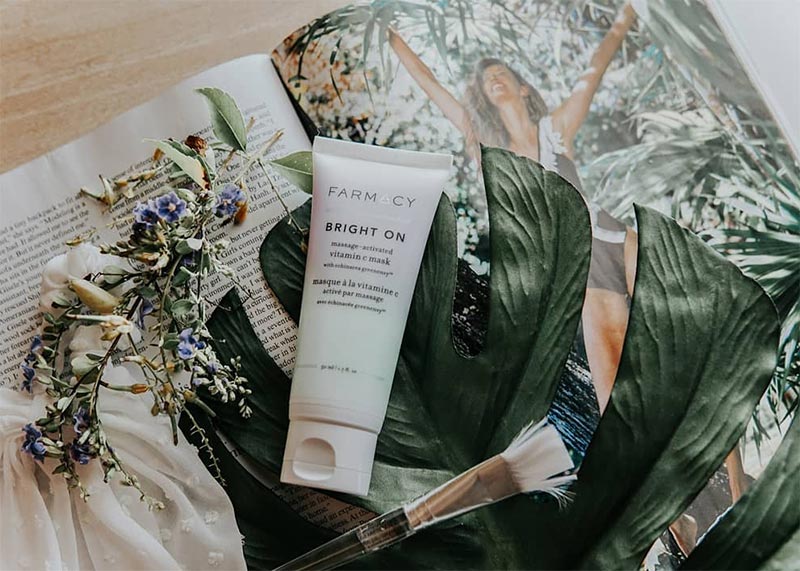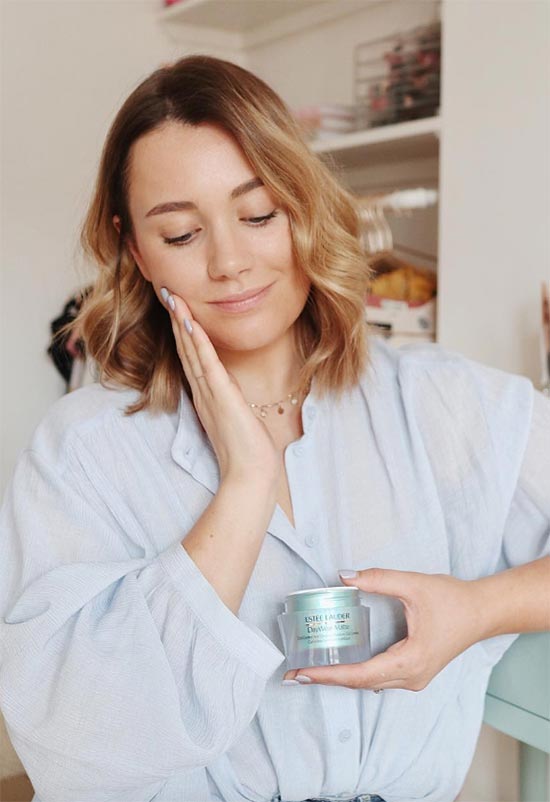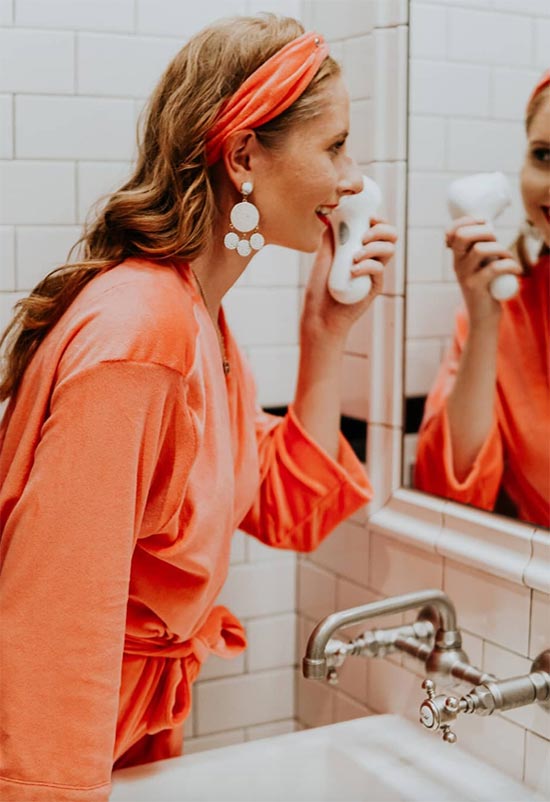Starting a new skincare product can be both exciting and nerve-wracking. Will it solve all of your skin woes, or will it induce its own set of problems? What makes answering this question even more complicated is a phenomenon known as purging.
Your skincare can break you out unintentionally, but it can also bring on an inevitable (and maybe even necessary) purge. To help you figure out if you’re dealing with a purge or a breakout, we’ve crafted this article. We’ll explain both situations thoroughly, and we’ll also give you some skincare best practices for preventing purging and dealing with it once it occurs.
In this article:
- What Is Skin Purging?
- What Ingredients and Products Cause Skin Purging?
- What Products Don’t Cause Purging?
- The Maybes
- How Long Does It Take for Your Skin to Purge?
- Skin Purging vs. Breakouts: How to Tell the Difference?
- Skin Purging vs. Skin Reaction
- How to Prevent Skin Purging
- What to Do When Your Skin Is Purging
What Is Skin Purging?
Skin purging can seem like a regular breakout, but it isn’t. It’s actually a potential side effect of using new skincare, and it can even be beneficial. Those trying to treat mild-to-moderate acne are the ones most likely to experience purging.
When you have slightly acne-prone skin, you might have some clogged pores under the surface of the skin that aren’t visible to anyone looking at you. Those are called micro-comedones. With the skin’s regular shedding cycle, they normally pop up to the surface randomly, just a few at a time, as whiteheads or blackheads. They often become inflamed at the surface of the skin, in which case they are basically regular pimples.
But then, you introduce an ingredient into your routine that speeds up that shedding cycle, either by exfoliating or by triggering new skin cell production. Suddenly, a lot of dead skin at the surface starts coming off quickly and mostly all at once. All of those hidden blemishes that were waiting to come out one at a time appear at the surface all at once, so it seems like a bad breakout.
In reality, you were probably going to experience all of those pimples anyway, but just not all at once. It’s called a purge because once those pimples pop up and then heal, there’s often a dramatic decrease in acne blemishes afterward because the skin has been cleared up from below.
Some sources like to explain that purging is a type of “detoxification” for the body. The reality is that purging has little to do with toxins and everything to do with regular acne and the skin shedding cycle.

What Ingredients and Products Cause Skin Purging?
The ingredients that are most likely to cause purging are part of a loose category that we call “active ingredients” in the beauty world. Actives are ingredients that have a significant renewing impact on the skin, either as exfoliants or as skin-regenerators.
Some of them are also considered active ingredients in medicine, like benzoyl peroxide and tretinoin, while others are strictly cosmetic ingredients, like retinol and glycolic acid.
The stronger the active ingredient, either because of its level of activity or because of its percentage in a product, the more likely it is that it’ll cause a purge.
These are the common skincare ingredients and practices that are most likely to cause purging:
- Retinoids like retinol, adapalene, tretinoin, tazarotene
- Alpha-hydroxy acids (a.k.a. AHAs) like glycolic acid, lactic acid, and mandelic acid
- Vitamin C, especially in higher percentages as ascorbic acid
- Salicylic acid (a.k.a. beta-hydroxy acid or BHA)
- Benzoyl peroxide (a.k.a. BP)
- Professional-grade peels or TCA peels
- Intense physical exfoliants, including professional microdermabrasion and cleansing brushes
- Laser resurfacing treatments
What Dermatologists Say About Purging
Dermatologists like Dr. Beibei Du-Harpur hypothesize that purging should only occur with ingredients like retinoids that increase the cell turnover deeper within the skin (as opposed to exfoliants that trigger shedding at the surface).
Even then, it seems to only happen in 15%-20% of cases. However, many people find that they experience purging even with surface exfoliants, and research itself is limited, so it’s hard to say anything conclusively.
What Products Don’t Cause Purging?
There are some products and ingredients that don’t cause purging. If you experience a breakout after using them, you’ll know that it’s not a purge and that they’re just not working for you.
Products and ingredients that don’t cause purging include:
- Cleansers without acids or retinoids
- Strictly hydrating toners, essences, serums, or moisturizers
- Humectants like hyaluronic acid
- All-natural products made with essential oils

The Maybes
There are some skincare ingredients that haven’t been popular for long enough for us to know if they can cause purging or not. None of them is as strongly exfoliating or skin-renewing as the ingredients that we listed at the start of the article, but they do have some rejuvenating action.
Most users won’t experience purging with these, but some might. If you do experience a breakout after using them, it probably won’t be purging, but the only way to know for certain is to see what happens if you keep using them.
These ingredients include:
- Niacinamide (especially at higher percentages)
- Polyhydroxy acids (a.k.a. PHAs) like gluconolactone and lactobionic acid
- Retinyl palmitate and granactive retinoids
- Azelaic acid
- Enzyme-based exfoliants
- Mild physical scrubs
How Long Does It Take for Your Skin to Purge?
The timeline for skin purging can vary slightly from person to person, but it generally starts and ends within the first two months of using a product. The timeline is also the best evidence you have as to whether you’re experiencing purging or a breakout since any acne that deviates from this timeline is likely not a purge.
The purging almost never starts the same week that you start a new product, at least not in full force, although you may notice a very slight increase in pimples at first. Within that first week, the breakouts could just as easily be random and unrelated, or they can be a result of the product being comedogenic. If you do have a breakout during that first week, it’s better to keep going to see what happens.
Purging normally begins after the skin has had more time to start shedding. It can start within the first 2-4 weeks of a new skincare product. Then, to totally go away, the skin has to go through a full shedding cycle (i.e. 28 days), so at least another 4 weeks. In other words, the purging can last up to 2 months after you’ve started a new skincare ingredient.
Once those first 2 months pass, your skin should start gradually improving. You may still have some post-acne redness or pigmentation that can make things seem worse, but rest assured that over time, those will fade as well.

Skin Purging vs. Breakouts: How to Tell the Difference?
Technically, skin purging is a breakout, but it’s just a different kind of breakout. It’s not always possible to tell which is which, but here are some signs that suggest you’re more likely to be purging.
- Purging usually happens only in areas of your face where you normally break out, while a breakout might also happen on other areas of your face.
- Purging doesn’t occur immediately but only shows up after your new skincare has had time to impact the skin.
- Purging eventually goes away within a reasonable amount of time (6-8 weeks), but a breakout from a product will continue for as long as you use it.
Skin Purging vs. Skin Reaction
The same ingredients that can cause purging can often also irritate the skin since they’re so intense. In dermatological research, skin purging and irritation are often conflated as the same thing, which in and of itself can also be confusing, although many professionals do make the distinction in their practice.
Irritation can refer to irritant contact dermatitis, which is when a skincare ingredient is just too harsh on the skin and breaks down the skin barrier or causes over-exfoliation. Sometimes, it can also refer to an allergic reaction, which is quite rare.
Irritation may look like bumpy pimples, but more often than not, it’s actually redness and a slight stinging or burning feeling, especially when you wash your face or apply moisturizer. It doesn’t happen where you normally break out but instead is more likely to occur where your skin is a little more sensitive, like around the nostrils, under the eyes, or near the mouth.
If you do experience irritation, it’s often best to slow down the frequency with which you use your actives or to take a break altogether, especially if it’s an over-the-counter product or a cosmetic.

How to Prevent Skin Purging
Purging isn’t really a side effect or even a bad thing. It’s often just part of how a skincare ingredient works on your skin, especially if you’re using that ingredient to help you manage your acne and prevent breakouts.
However, a purge still isn’t a pleasant experience, and for some, it can also bring on some hyperpigmentation after all of those blemishes heal, which is, in and of itself, hard to treat. If you work with the public and really can’t handle your skin getting worse before it gets better, we do have some tips. They’ll help you prevent a purge, but keep in mind that they will also slow down your overall results.
Have a Set Routine
Before you introduce strong skincare ingredients, it’s important that you already have a very basic skincare routine that works for your skin. At the very least, your routine should include a cleanser, moisturizer, and sunscreen since many of the actives that cause purging also make the skin more sensitive to sun exposure.
Start with Gentle Actives
One way to prevent purging is to take it slowly with the skin renewal process or exfoliation by first using a gentler version of what you had in mind.
For example, instead of using a 10% glycolic acid toner, choose either a lower percentage or opt for a gentler AHA like lactic acid or mandelic acid. Another example would be to start with a low percentage of retinol instead of going straight to prescription tretinoin.
It doesn’t exactly prevent a purge, but instead, it reduces the severity of a potential purge while also stretching it out a bit. In other words, it’ll take longer to see improvements in your skin, but you’ll never experience an intense breakout all at once.
After that initial, slow start, you can switch to stronger active ingredients knowing that your skin has already been renewed, so your chances of purging will be lower.
Introduce Actives Slowly
Another way of reducing that initial intensity is to introduce new actives into your routine slowly. This is also incredibly helpful for preventing irritation or over-exfoliation.
For example, only use your new active skincare once during the first week. Use it two or three times in the second week, and so on, until you reach the maximum frequency that your skin can tolerate.
Use an Antibacterial Agent
When it comes to tretinoin, research has shown that it’s more likely to cause purging if it’s used alone, without an antibacterial agent of some sort. On the other hand, when combined with the topical antibiotic clindamycin phosphate, the risk of purging lowers dramatically. If you’re under the care of a dermatologist, you can ask them for the combined prescription.
If you’re only using cosmetics and over-the-counter products, it’s still possible that other topical ingredients that inhibit the acne bacteria will prevent purging. If you want to start using retinol or AHA, you can first introduce azelaic acid or benzoyl peroxide, which may mitigate the purging.

What to Do When Your Skin Is Purging
Even though it’s mostly benign, skin purging isn’t fun. When those blemishes come to the surface, you might be tempted to stop your skincare altogether or to dump a bunch of new actives on your skin.
Well, we’re here to tell you not to do that! Instead, here are the things you should do when the dreaded purge starts.
- Don’t stop using your actives, although you can reduce frequency if your skin is also showing signs of irritation.
- Resist the urge to add new products. You should already have a steady routine before you add powerful actives, and you don’t want to change it.
- During purging, your skin is going to need extra fortification. Even though you’re seeing acne, don’t stop moisturizing since moisture and hydration can help blemishes heal more quickly.
Purging might be awful to experience, but it’s not the end of the world! If you’re going through skin purging, we know you’ll get through it with better skin on the other side.
Photos via @katespiers, Instagram





